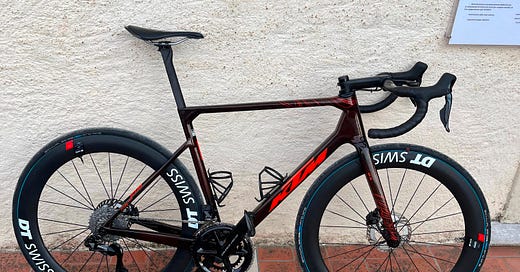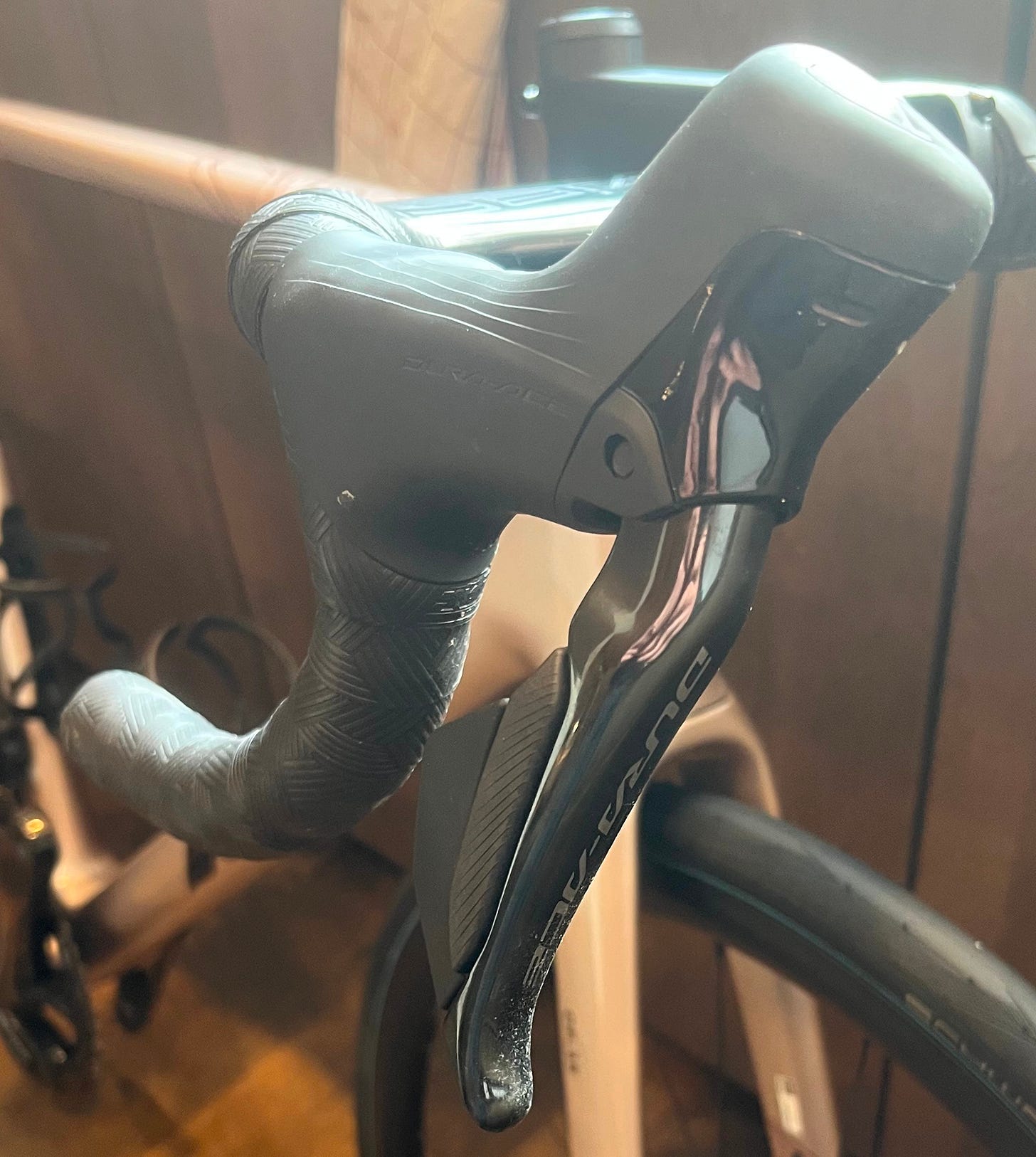Braking up an argument
I've got a bone to pick with Europeans. No, not that one - I'm very much in the 48% that thinks that was a stupid idea. This is something else, something I think they've got completely wrong.
I’m fully prepared to annoy a few purists with this one, but here we go anyway. It’s something pretty niche that I’ve got a fairly strong opinion about. I’m talking about brakes. Brakes on a bike that is, just in case you were in any doubt.
Quick overview for the non-cyclists in the room. In Britain, we use the right hand brake to slow the front wheel down, leaving the left to control the back. In Europe, and most other places for that matter, they’ve decided to flip it. The left brake controls the front wheel and the right the back. I’m convinced they’re wrong and we’re right, and I’m prepared to die on this hill.
Our story can be traced back to the human desire to decapitate one another, sort of. With most people being right-handed, and thus wearing their sword on their left hip, horses travelled on the left of the road. This was so that riders were then in a less awkward position to draw their weapons and fight anyone coming the other way. I can’t say I’ve yet seen road rage ever descend to jousting, but there’s still time.
With the advent of bikes and motor vehicles, they naturally travelled on the left as well. When brakes first came about on bikes, they weren’t the most reliable at all, and had a tendency to be fairly inconsistent from use to use - either having no slowing effect, or biting far more than the rider expecting and causing a sudden stop. Given cyclists in Britain were riding on the left, and turning right through traffic proved the more hazardous of the two directions to go, it was decided to have the left hand control the rear brake while the right hand signalled. The reason being that if the brakes were to bite suddenly, the rider would simply skid, not break any teeth.
In mainland Europe, some bloke named Napoleon did some stuff. Now, Bonaparte was left handed. So the whole sword-drawing left-side-driving thing didn’t work for him. As a result, he advocated for right-side road travel, enforcing it in whatever land he conquered. I suppose that’s just something you can just do if you happen to be the greatest general in history. Now, I’m not saying I should raise an army of 600,000 men and march to Moscow to try and bring the right-hand front-brake configuration back into fashion, but I’m also not saying it’s completely off the table…
With most of mainland Europe now travelling on the right, the same principle with hand signalling and speed control on a bike applied in reverse. Fast forward over 200 years, and the standard for Europeans is having the right-hand brake lever controlling the rear wheel.
That’s all well and good, and it may have made sense back then, but quite a few things have changed. Firstly, we’re no longer at war with the French. Not entirely relevant, but just thought I’d mention that. Two other key things that have changed though, are the inventions of gear shifting controlled from the hoods and reliable braking. The first reason why those are important is that they distinguish me from being that guy that hates when something they’re normalised to is done differently, simply because it’s different - a bit like those daft arguments against gay marriage (“it’s not natural”, “I just don’t like it” etc.). The second is that I believe these two factors make the British brake configuration the better of the two.
You see, with two of the three major gear manufacturers in the cycling world (including Shimano, which is comfortably the most common), the shifting on the rear cassette is controlled on the right hood. This is where shifting happens far more commonly compared with the front chainrings, every few seconds perhaps. The rise of disc brakes has also led to far more consistent braking in all conditions. There’s no longer the risk of brakes suddenly biting and taking you by surprise. As a result, the front brake becomes the favoured option given it gives better control over the speed of the bike. The weight of the rider going onto the front wheel as the system slows, as opposed to coming off the back wheel as weight moves forwards. That means that with the British configuration, both the key brake and the key shifter can be controlled with the same hand. With only one hand on the bars, when eating for example, there’s not that much of a loss of control over the bike should evasive action need to be taken. Add onto that the fact that the majority of people are right handed, and you’ve got another reason that right hand front brake is, in fact, the correct set-up.
So, rant over. Believe it or not, I actually had to do a bit of research for this one, though maybe calling it research is a stretch. Did I write this mainly to send to any mechanic that questions it in the future? Maybe. Regardless, I’m convinced the British brake set-up just makes more sense. If you disagree, well, I wish your brake pads worn and hydraulics leaking. Ok, maybe that’s a bit intense, but you get the idea.







a brick wall can bring about a sudden stop
"The reason being that if the brakes were to bite suddenly, the rider would simply skid, not break any teeth." — this is one of many reasons why I'm riding euro brakes...
Also rear gears = rear brakes, front gears = front brake